
Roots
The quiet hours of night, often seen as a period of stillness and restoration for the body, hold a distinct significance for textured hair. As the world outside settles into slumber, our coils, curls, and waves embark on their own silent journey, interacting with surroundings in ways that can either fortify their delicate structure or invite subtle, yet cumulative, damage. Understanding this nocturnal dynamic begins with a grounding in the very essence of textured hair itself, its unique architecture, and the forces that shape its well-being. We often consider hair care a daytime pursuit, a series of washes, conditions, and styles.
Yet, the science reveals that the hours we spend in repose are equally, if not more, influential in preserving the vibrancy and integrity of these distinct strands. This exploration delves into the foundational scientific principles that underscore the necessity of protecting textured hair overnight, inviting a deeper connection with the very fabric of our strands.
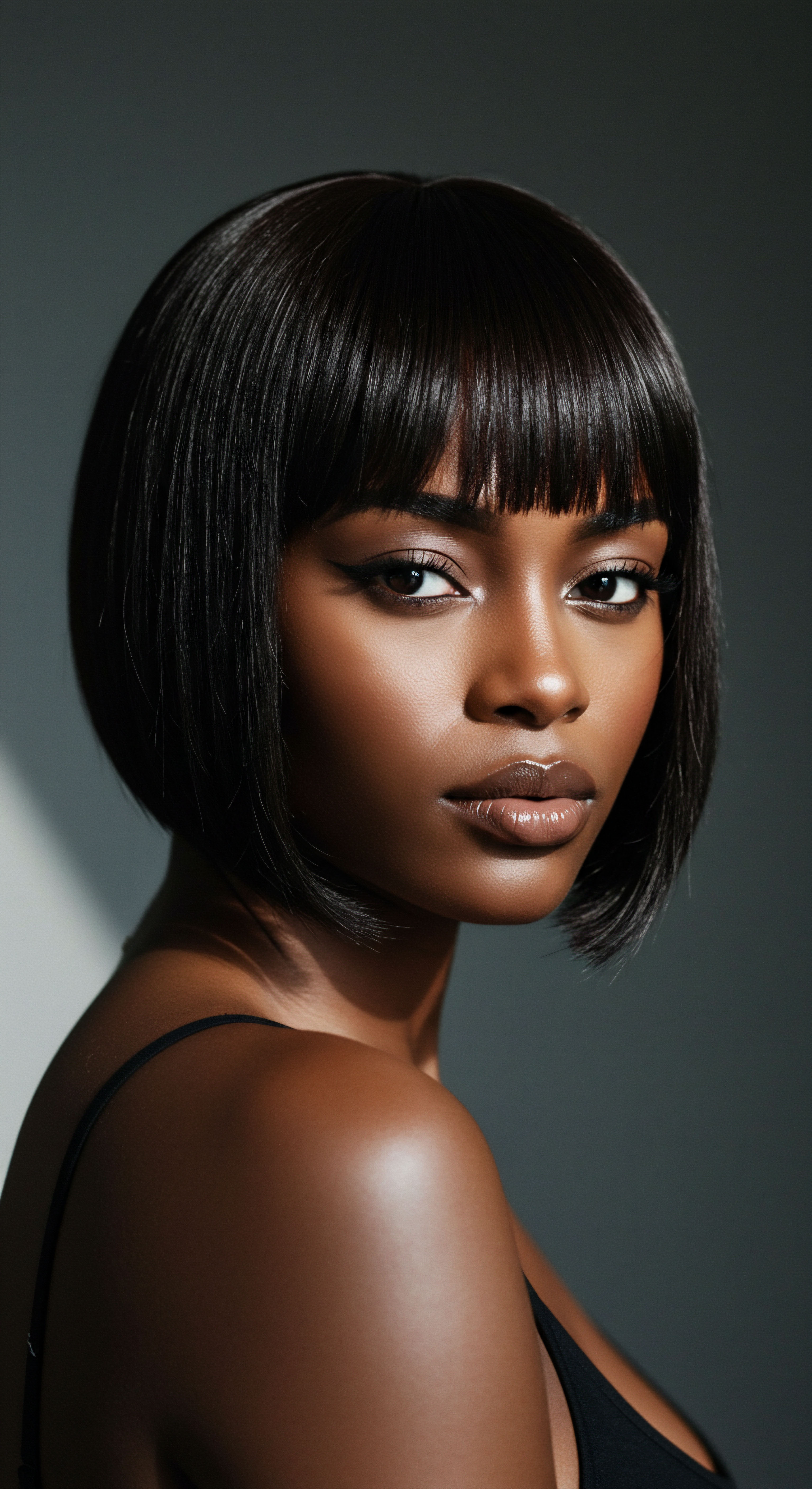
Hair Anatomy and Physiology Specific to Textured Hair
The human hair shaft, a filamentous structure emerging from the scalp, is primarily composed of a protein called Keratin. While keratin forms the fundamental building block across all hair types, the way these protein complexes arrange themselves, alongside other components, differs markedly in textured hair. Textured hair, particularly that of individuals of African descent, exhibits a wide range of phenotypes, from loose waves to tightly coiled patterns.
These variations stem from the unique elliptical and curved shapes of the hair shaft itself, creating more points of contact along the strand compared to straight hair. This structural characteristic, while lending itself to stunning visual complexity, also introduces areas of inherent weakness, reducing the tensile strength of the hair shaft and making it more prone to breakage.
Beyond the macroscopic shape, the microscopic arrangement of the cuticle, cortex, and medulla also plays a role. The cuticle, the outermost protective layer, consists of overlapping scales. In textured hair, these scales may naturally be more lifted or prone to lifting due to the curves and twists of the strand. This slight elevation of the cuticle can increase friction between individual hairs and external surfaces, making the hair more susceptible to damage and moisture loss.
The cortex, the thickest layer, houses the melanin pigments that give hair its color. The medulla, the innermost layer, is not present in all hairs.

What Makes Textured Hair Structurally Distinct?
The distinct helical structure of textured hair means that each strand undergoes more twists and turns than straight hair. This creates areas where the cuticle is more exposed and vulnerable. Think of a coiled spring; at each bend, the outer surface is stretched and more susceptible to external forces.
This morphological characteristic is not a flaw, but a design that necessitates specific care. The inherent bends and coils also impede the natural downward flow of scalp oils, or sebum, along the hair shaft, often leading to drier ends and a greater need for external moisture application.
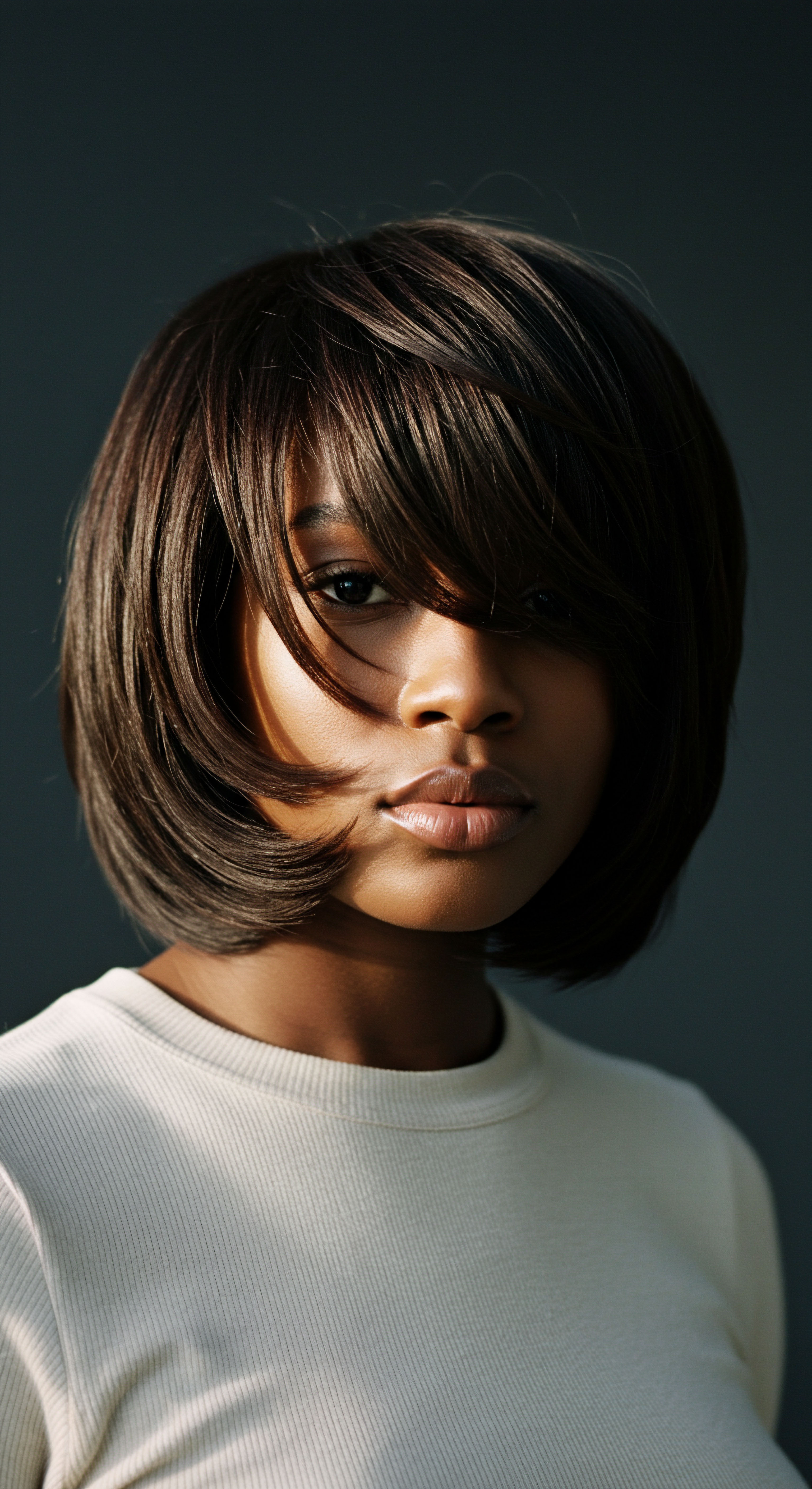
Textured Hair Classification Systems
While formal scientific classification systems for textured hair are complex and still evolving, common community-based systems often categorize hair by its curl pattern. These systems, while not always scientifically precise, serve as useful guides for understanding general care needs.
- Type 3 Hair ❉ Generally categorized as curly hair, ranging from loose, buoyant curls (3A) to tighter, springy corkscrews (3C). These curls are typically well-defined.
- Type 4 Hair ❉ Characterized by coily or kinky patterns, ranging from S-shaped coils (4A) to Z-shaped kinks (4B) and very tight, often less defined coils (4C). This hair type experiences the most shrinkage and can be the most fragile due to its tight coiling.
Understanding one’s hair type within these systems can help in predicting its behavior, including its susceptibility to tangling and breakage, especially during periods of movement like sleep. However, it is vital to recognize that these classifications are broad and individual hair can exhibit characteristics across categories, emphasizing the need for personalized care.

The Essential Lexicon of Textured Hair
A shared vocabulary helps us navigate the world of textured hair care with clarity.
- Porosity ❉ This refers to your hair’s ability to absorb and retain moisture. High porosity hair has more open cuticles, allowing moisture to enter easily but also escape quickly. Low porosity hair has tightly closed cuticles, making it harder for moisture to penetrate but easier to retain once absorbed.
- Hygral Fatigue ❉ This phenomenon describes damage to hair follicles caused by repeated swelling and contraction from excessive moisture absorption and release. When hair absorbs too much water, the cuticle swells and lifts, making the strand vulnerable. If this happens frequently without adequate protein to maintain structural integrity, the hair can lose elasticity, feel mushy, and become prone to breakage.
- Protective Style ❉ Hairstyles that minimize manipulation of the hair, shield the ends, and often tuck away strands to reduce exposure to environmental stressors and friction.
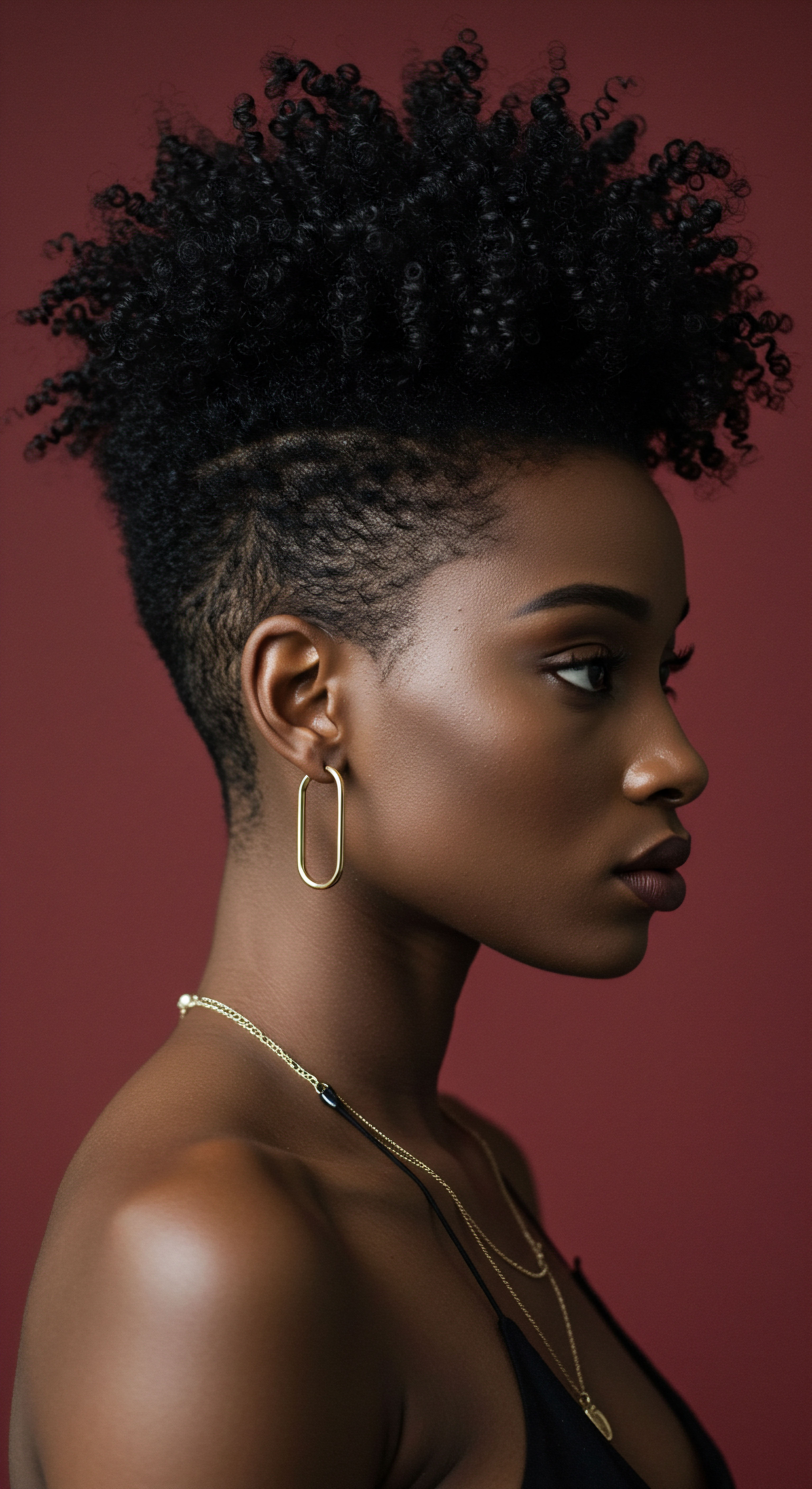
Hair Growth Cycles and Influencing Factors
Hair growth occurs in cycles ❉ anagen (growth), catagen (transitional), and telogen (resting/shedding). While genetics primarily dictate these cycles, external factors and overall health can influence hair health and retention. Blood flow to the scalp, for instance, delivers oxygen and nutrients to hair follicles. Insufficient sleep or chronic stress can reduce this blood flow, potentially impacting follicle health and leading to thinner, more fragile hair.
The scalp’s microbiome, an ecosystem of microorganisms, also plays a critical role in hair health, influencing moisture retention and protecting against irritation. A balanced scalp microbiome is essential for healthy hair growth.
The unique structural qualities of textured hair, from its elliptical shaft to its lifted cuticles, underscore its susceptibility to external forces and moisture imbalances, making thoughtful protection paramount.
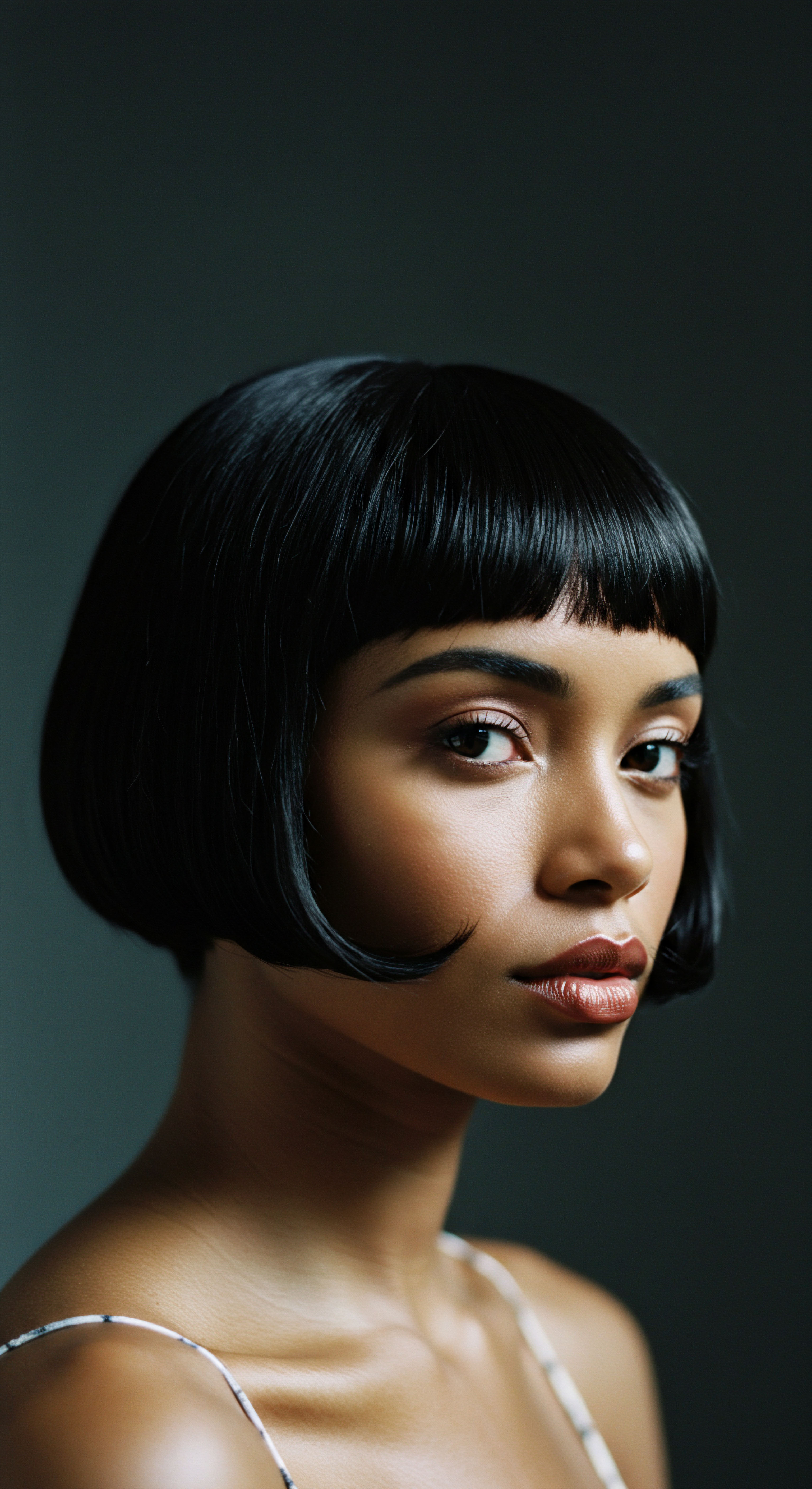
Ritual
As daylight fades and the quiet of evening descends, a shift in our approach to hair care begins. Moving from the foundational understanding of textured hair, we now consider the deliberate actions, the rituals, that safeguard its integrity through the night. This transition from theory to practice acknowledges the tangible steps we can take, transforming routine into a gentle, purposeful act of preservation.
It is about understanding how seemingly simple nighttime habits translate into scientific benefits, protecting against the daily wear and tear that even sleep can bring. This section explores the methods and tools that allow our coils and curls to rest as serenely as we do, ready to greet the morning with vibrancy.

Protective Styling Encyclopedia
Protective styles serve as a shield for textured hair, minimizing manipulation and exposure to environmental elements, including the friction encountered during sleep. These styles are not merely aesthetic choices; they are a strategic defense against mechanical damage.
- Loose Braids and Twists ❉ Securing hair in loose braids or two-strand twists before bed helps to keep individual strands aligned and reduces the surface area exposed to friction. This prevents tangling and knotting that can occur with unrestrained hair movement. The looser the braid or twist, the less tension on the scalp, which is important to avoid traction alopecia, a condition where consistent pulling on hair can lead to hair loss.
- Pineapple Method ❉ For those with medium to long curls, gathering hair into a loose, high ponytail or “pineapple” on top of the head minimizes contact with the pillow. This preserves curl definition and reduces frizz by keeping the majority of the hair off the pillow surface.
- Buns and Coils ❉ Low, loose buns or large coiled sections can also offer protection, particularly for shorter or less dense hair, by containing the hair in a single, less vulnerable unit. The key is to ensure these styles are not tight, which could cause tension on the scalp or stress on the hair shaft.

Natural Styling and Definition Techniques
While daytime styling focuses on aesthetic definition, nighttime natural styling aims to maintain that definition with minimal effort upon waking. The techniques used here are about gentle preservation.
The application of leave-in conditioners or light oils before styling for sleep can further enhance moisture retention. These products create a barrier that helps prevent moisture loss, especially for hair prone to dryness. The goal is to wake with hair that requires minimal manipulation, thereby reducing the need for extensive restyling, which is a common source of breakage.

Wigs and Hair Extensions Mastery
For those who wear wigs or hair extensions, nighttime care is equally vital, albeit with different considerations.
When wearing extensions, securing your natural hair in loose braids or twists underneath the extension can prevent matting and tangling. For wigs, removing them overnight is often recommended to allow the scalp to breathe and to prevent tension on your natural hair. Sleeping in a wig can cause friction against the wig cap and your natural hair, leading to breakage and discomfort. Furthermore, removing wigs allows for proper scalp hygiene, preventing product buildup and promoting a healthy scalp environment.

Heat Styling and Thermal Reconditioning with a Safety-First Approach
While nighttime protection primarily addresses mechanical and moisture-related damage, the implications of daytime heat styling extend into the evening. Hair that has undergone thermal reconditioning or frequent heat styling is often more vulnerable due to altered protein structures and a compromised cuticle layer.
For such hair, rigorous nighttime protection becomes even more critical. The heat-damaged cuticle is more prone to lifting and chipping from friction, exacerbating frizz and breakage. Ensuring hair is completely dry before bed is paramount to avoid hygral fatigue, which is more likely to affect hair with a compromised cuticle. The application of reparative leave-in treatments overnight can support the hair’s recovery process, providing a continuous dose of fortifying ingredients.
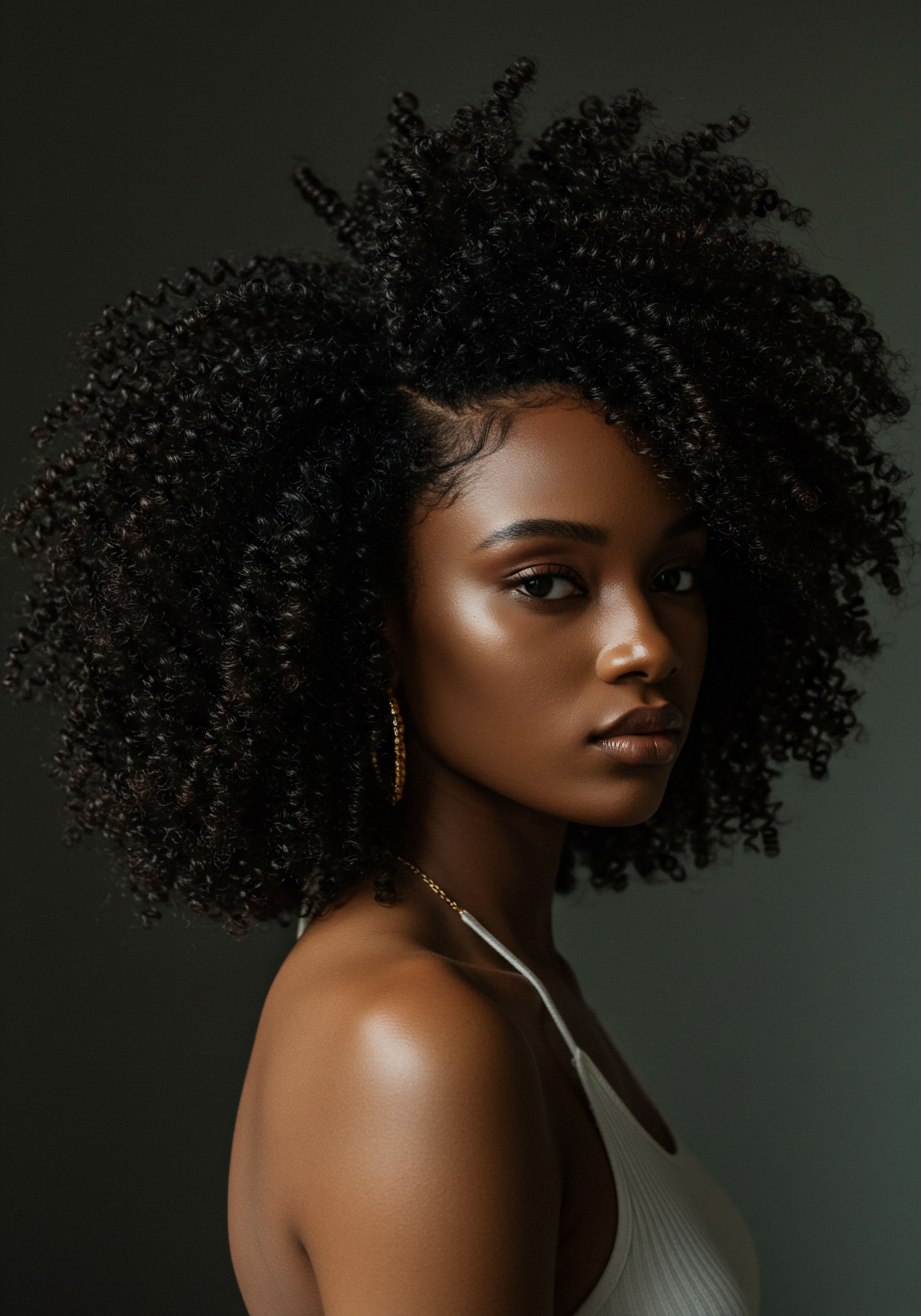
The Complete Textured Hair Toolkit
The right tools are extensions of our protective rituals, designed to minimize harm and maximize benefit.
- Silk or Satin Pillowcases ❉ Unlike cotton, which can create significant friction and absorb moisture from hair, silk and satin provide a smooth surface. This allows hair to glide, reducing mechanical stress, frizz, and breakage. A 2020 study notes silk’s hydrating and breathable properties, highlighting its ability to help hair retain moisture and reduce frizz and breakage. The smooth surface of silk can reduce hair friction by up to 43% according to research published in the Journal of Cosmetic Dermatology.
- Silk or Satin Bonnets/Scarves ❉ These accessories offer an additional layer of protection, especially for those who toss and turn frequently. They encase the hair, shielding it from direct contact with bedding materials and maintaining moisture. The smooth texture of silk minimizes friction between the hair and the bonnet, reducing frizz and split ends.
- Hair Ties and Scrunchies ❉ When securing hair for sleep, choose soft, fabric-covered ties like silk or satin scrunchies. These prevent the harsh creasing and pulling that elastic bands can cause, reducing stress on the hair shaft.
Nighttime hair care is a deliberate ritual, where gentle techniques and specific materials work in concert to protect textured strands from friction, moisture loss, and mechanical stress.

Relay
Beyond the visible act of protection lies a deeper, interconnected understanding of why safeguarding textured hair overnight holds such profound scientific and cultural weight. This section ventures into the intricate interplay of biological processes, historical context, and the subtle yet significant impact of our sleep environment. It is here that we move beyond mere practice to the scientific underpinnings, exploring the mechanisms at play when hair rests, and acknowledging the legacy of care that informs our present actions. We seek to unravel the complex ‘why’ behind the ‘what,’ revealing a nuanced landscape where cellular health, material science, and ancestral wisdom converge.

The Biophysics of Nocturnal Hair Damage
The concept of protecting textured hair overnight is firmly rooted in biophysical principles. During sleep, mechanical forces act upon the hair shaft, leading to potential damage.
The average person shifts position up to 40 times per night. This constant movement creates friction between the hair and the pillowcase. Textured hair, with its inherent curves and lifted cuticles, is particularly susceptible to this abrasive force. Friction can lift, chip, or even break the cuticle scales, exposing the delicate inner cortex.
This exposure leads to increased porosity, making the hair more prone to moisture loss and further damage. When cuticles are roughened, they snag on each other, resulting in tangles, knots, and frizz. This is especially pronounced in wavy or curly hair, which has more points of contact along the strand, leading to more friction, as noted in studies on friction dynamics of different hair types.
Furthermore, cotton pillowcases, common in many households, are absorbent. They draw moisture not only from the skin but also from the hair. This moisture absorption contributes to dryness, which can exacerbate frizz and make hair more brittle and prone to breakage. Silk and satin, in contrast, are far less absorbent and possess a smoother surface, significantly reducing this friction and moisture wicking.

Does Hair Porosity Change Overnight?
While hair porosity itself is largely an intrinsic characteristic determined by genetics and prior damage, the manifestation of its effects can be heightened overnight. For high porosity hair, already prone to losing moisture quickly, the absorbent nature of cotton pillowcases or exposure to dry air can accelerate dehydration. This leads to further cuticle lifting and increased susceptibility to mechanical damage upon waking. Conversely, low porosity hair, which struggles to absorb moisture, can benefit from a protected environment that helps maintain its existing hydration without being overwhelmed.

The Role of Lipids and Proteins in Overnight Resilience
Hair is primarily composed of keratin protein, but lipids, though constituting only about 4% of hair’s weight, act as the “cement” that holds these protein structures together, providing protection against environmental and chemical damage, preventing breakage, and maintaining moisture balance.
During the day, and particularly at night through friction and moisture loss, hair lipids can be depleted. This loss compromises the hair’s protective barrier, leading to increased hydrophilicity (water absorption), higher surface energy, and greater friction. Replenishing these lipids is crucial for maintaining hair’s strength, elasticity, and shine. Some restorative oils and treatments are specifically designed to be left on overnight to allow these lipids to penetrate and fortify the hair shaft.
Consider the impact of chemical treatments like bleaching. Research indicates that severe bleaching can increase the propensity for cuticle scale lifting and significantly increase friction on the hair surface, altering it from a hydrophobic to a more hydrophilic state. For hair already compromised by such treatments, overnight protection becomes an indispensable measure to mitigate further damage and support the restoration of its lipid layer.

Cultural Continuities and Scientific Validation of Hair Wrapping
The practice of wrapping or covering hair for sleep is not a modern invention; it possesses deep historical and cultural roots, particularly within African and African diaspora communities. Long before scientific studies elucidated the benefits of reduced friction and moisture retention, these practices were integral to hair care.
Historically, head wraps and coverings held profound symbolic significance in many African cultures, serving as markers of identity, social status, and spiritual connection. During periods of enslavement and subsequent oppression, these practices transformed into acts of resilience and cultural preservation, offering practical protection for hair under harsh conditions while also maintaining a connection to ancestral heritage.
What began as a blend of practical necessity and cultural expression now finds validation in contemporary science. The “sleep cap” or “bonnet,” often made from silk or satin, directly addresses the scientific challenges posed by textured hair during sleep. They replicate the protective barrier that traditional head wraps offered, preventing tangles, reducing breakage, and maintaining moisture.
This cultural practice, passed down through generations, effectively predated and anticipated modern scientific understanding of hair biophysics. It serves as a compelling example of traditional wisdom aligning with empirical data, demonstrating that practices deeply rooted in heritage often carry an inherent, often unarticulated, scientific basis.
A lesser-known aspect, yet one that speaks to the holistic impact of these practices, involves the potential influence on the scalp’s microenvironment. While hair itself does not breathe, the scalp is a living organ with its own delicate microbiome. A warm, moist environment, such as that created by sleeping with wet hair under a non-breathable covering, can imbalance this microbiome, potentially encouraging fungal growth or irritation.
However, breathable silk or satin bonnets, while offering protection, also allow for adequate air circulation, supporting a healthy scalp environment. This careful balance between protection and breathability is a subtle yet significant scientific consideration in overnight hair care.
The scientific rationale for protecting textured hair overnight rests upon mitigating friction-induced cuticle damage, preserving essential hair lipids, and honoring historical practices now validated by modern biophysical understanding.

Reflection
The journey through the scientific basis of protecting textured hair overnight reveals a deeper connection than simple habit. It is a testament to the intricate design of our strands, the subtle dance of moisture and friction, and the enduring wisdom passed through generations. We come to appreciate that the gentle act of covering hair before sleep is not merely a superficial gesture but a scientifically sound practice, a quiet revolution against daily wear and tear.
It invites us to consider our hair not just as an accessory, but as a living part of ourselves deserving of thoughtful, informed care. This understanding empowers us to move beyond anecdotal advice, grounding our routines in knowledge that respects both the scientific complexities and the rich cultural heritage of textured hair.

References
- Quinn, C. R. Quinn, T. M. & Kelly, A. P. (2003). Hair care practices in African American women. Cutis, 72(4), 280-2, 285-9.
- Wong, N. Williams, K. Tolliver, S. & Potts, G. (2025). Historical Perspectives on Hair Care and Common Styling Practices in Black Women. Cutis, 115(3), 95-99.
- Schwartz, A. M. & Knowles, D. C. (1963). Frictional Effects in Human Hair. Journal of the Society of Cosmetic Chemists, 14(1), 43-52.
- Bhushan, B. Kim, Y. & Ko, S. (2014). Friction Dynamics of Straight, Curly, and Wavy Hair. Journal of Tribology, 136(2).
- Robins, C. R. & Bhushan, B. (2019). Hair friction and damage. Journal of Cosmetic Science, 70(4), 257-270.
- Gopinath, S. & Kumar, S. (2020). Silk ❉ A Natural Biomaterial for Skincare and Haircare. Journal of Cosmetic Dermatology, 19(11), 2911-2917.
- Trueb, R. M. (2001). The impact of sleep on hair biology. Journal of the European Academy of Dermatology and Venereology, 15(S2), 24-27.
- Mirmirani, P. & Khumalo, N. P. (2014). Traction alopecia ❉ how to translate study data for public education ❉ closing the KAP gap? Dermatologic Clinics, 32(2), 153-161.
- Okoro, N. E. & Khumalo, N. P. (2020). Hair care practices and common hair and scalp disorders in African American women. Journal of the American Academy of Dermatology, 82(4), 935-943.
- Gamage, A. & Pande, S. (2023). Hair Lipid Structure ❉ Effect of Surfactants. Cosmetics, 10(4), 105.
- Cruz, C. F. & Gomes, A. C. (2020). Hair damage and its repair. Journal of Cosmetology & Trichology, 6(1), 1-5.
- Gavazzoni Dias, M. F. (2015). Hair cosmetics ❉ an overview. International Journal of Trichology, 7(1), 2-15.
- Popescu, C. & Höcker, H. (1999). Hair—the effect of cosmetic treatments on hair fibre damage. Journal of Cosmetic Science, 50(4), 237-248.
- Robbins, C. R. (2012). Chemical and physical behavior of human hair (5th ed.). Springer Science & Business Media.
- Dawber, R. P. R. & De Berker, D. (2000). Hair and Scalp Disorders ❉ Common Presenting Problems (2nd ed.). Blackwell Science.